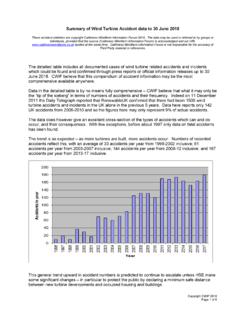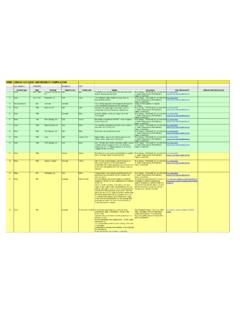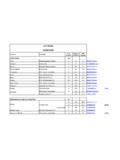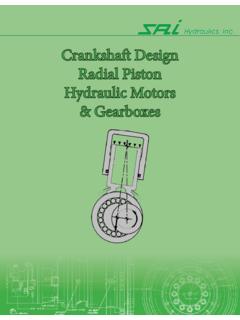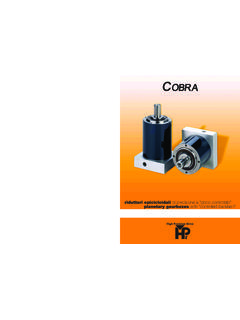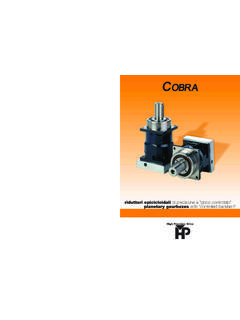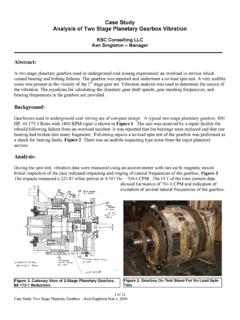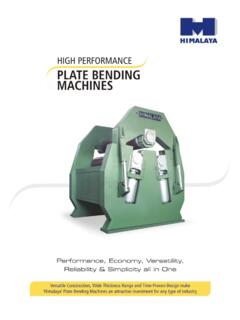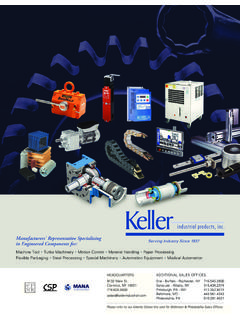Transcription of Wind Turbine Blades, Gearboxes and Generators
1 Wind Power in Canada Part 1 Wind Turbine Blades, Gearboxes and Generators FC Business IntelligenceProduced in association with: Wind Turbine Optimization, Maintenance and Repair SummitToronto, Canada December 8-9, 2014 Wind Power in Canada Part 1 Wind Turbine Blades, Gearboxes and in association with: Wind Turbine Optimization, Maintenance and Repair SummitToronto, Canada December 8-9, 2014 With a recent explosion in new wind project developments and constructions throughout the provinces, Canada is rising up the ranks in terms of the contributors to the global wind power a recent survey with wind power experts working in the Canadian provinces, key concerns regarding power production loss were highlighted alongside views on the opportunities to reclaim some of that lost power.
2 In response, Wind Energy Update has published the following whitepaper looking at the three most capital-intensive components of a wind Turbine : the technologies involved, causes for their failure, their reliability and failure rates. This extract has been taken and edited from the WEU Onshore Wind O&M Strategies Report conjunction with the Wind Turbine Optimization, Maintenance and Repair Summit, Canada (8th 9th December, Toronto) this whitepaper will help you to master strategies to minimize power production losses and optimize Turbine performance in harsh climatic conditions.
3 If you find this report interesting, please let me know I d be delighted to hear your HarmanHead of Wind & Marine Division| EnergyWind Energy UpdateT. +44 (0)207 375 7577 (Direct) | T. 1800 814 3459 (USA) | T. 1866 996 1235 Power in Canada Part 1 Wind Turbine Blades, Gearboxes and in association with: Wind Turbine Optimization, Maintenance and Repair SummitToronto, Canada December 8-9, 2014 Rotor BladesBlade reliability is crucial. Being directly responsible for harvesting the mechanical energy contained by the wind, they are completely exposed to its stochastic effect and turbulences.
4 These challenging conditions determine a highly dynamic loading regime, which already becomes a headache at design stage, when blades have to achieve an extraordinarily delicate balance between structural resistance, aerodynamic properties and noise-related performance. Data collected by NREL on US wind turbines (Sheng S., 2013) assessed the reliability of Turbine components over a period of ten years from commissioning. With regard to rotor blades, initial failure rates were high due to defects occurring at the manufacturing stage, or damage caused during transport to or assembly at the wind farm site.
5 During the ten-year assessment period, approximately 2% of Turbine blades needed replacement each year, most commonly as a result of damage caused by lightning component associated with the reliability of rotor blades is the rotor system (which determines blade position). A study by Delft University in the Netherlands (Echavarria, 2008) looked in more detail at the reliability of the major components over time on a number of German wind projects. Rotor systems (excluding the blades) were analyzed over the course of 10 years, and the findings revealed a stark difference between the reliability of turbines with pitch control and those with stall control.
6 Pitch-controlled rotors suffered many more failures throughout the course of the monitoring period, averaging around one failure every four years. Causes of rotor blade failureAmong the various causes of damage to rotor blades, the most common are: Embedded issues related to non-optimal design or manufacturing defects Preliminary damage occurring during transportation or installation Environmental factors ( erosive materials transported on the air, lightning strikes or ice build-up where relevant) Wind turbulence and operative conditions (high dynamic loads) Lightning damage, partially mitigated by the implementation of lightning rods, but a frequent cause of accidents given the increasing tip height of modern main types of damage that wind Turbine blades can suffer are.
7 Debonding, undermining the structural integrity of the component through the deterioration of the bonding agents used at the interface between the various structural elements of a blade Wind Power in Canada Part 1 Wind Turbine Blades, Gearboxes and in association with: Wind Turbine Optimization, Maintenance and Repair SummitToronto, Canada December 8-9, 2014 Delamination, sometimes associated with poor design and resulting in air traps between the piles of a blade or poor infusion of resin in a given area that causes poor or no bonding Leading-edge erosion, caused by the prohibitive operational environment (high rotational speed)
8 And a variety of erosive agents like sand, rain or hail Bolted joint failure, essentially due to the accumulated fatigue associated with the extreme dynamic loads Matrix cracking, sometimes developed at the manufacturing stage Surface wear Multiple cracking, with random and scattered damaging pattern FracturesRoutes to cutting rotor blade failure rates and driving up reliability Rotors are the most exposed of all the components, being open to the elements and experiencing continual dynamic load changes. At the beginning of their lives, manufacturing defects can condemn blades to failure before they even leave the factory.
9 During transportation to the site and at the construction phase physical damage may occur, which will require repair before the turbines are commissioned. In these scenarios, there may be opportunities to improve operator procedures and introduce checks, firstly to reduce the risk of defects and damage occurring, and secondly to detect any problems which have arisen before in operation, environmental problems such as lightning strikes and the gradual accumulation of debris on the blade surface can lead to damage and a significant fall-off in efficiency over time.
10 The risk of damage from force majeure can never be eliminated; however, careful design (through appropriately specified lightning conductors, for example) can reduce the risk of costly and time-consuming catastrophic failures. Regular maintenance checks can also ensure blade integrity is sound and operating performance is due to blade pitch mechanism failuresA survey by VTT Technical Research Centre of Finland (Stenberg and Holttinen, 2010) assessed the downtime of each of the major components for 72 wind turbines between 1996 and 2008 to ascertain the impact of failures over a Turbine s lifespan.
